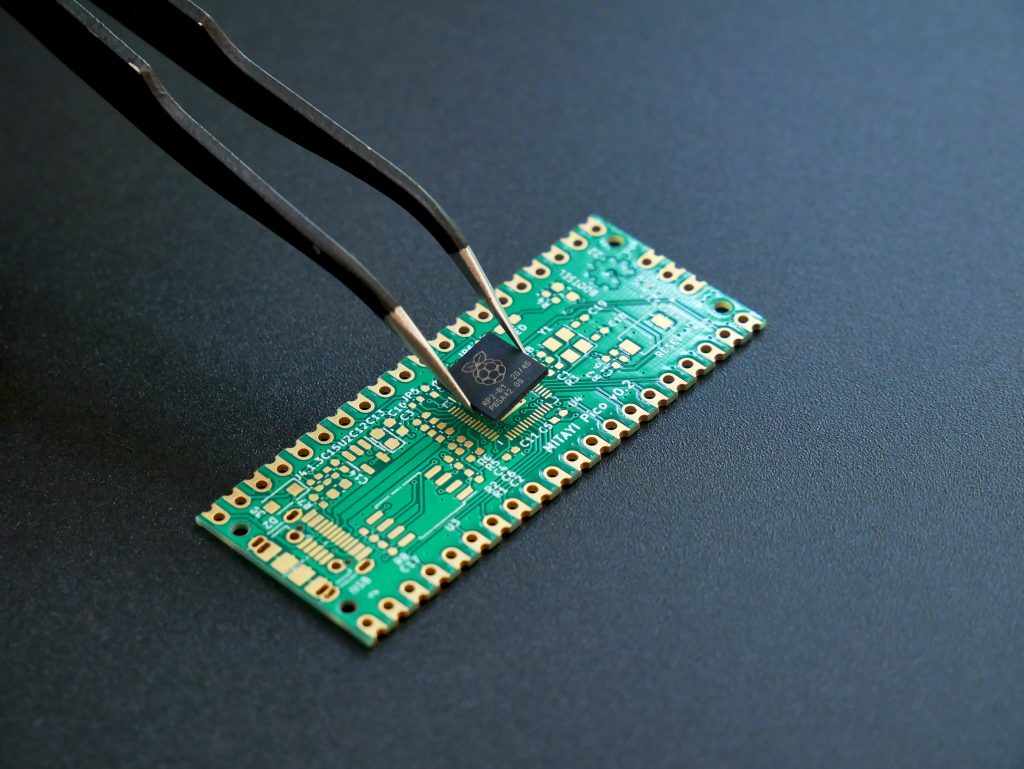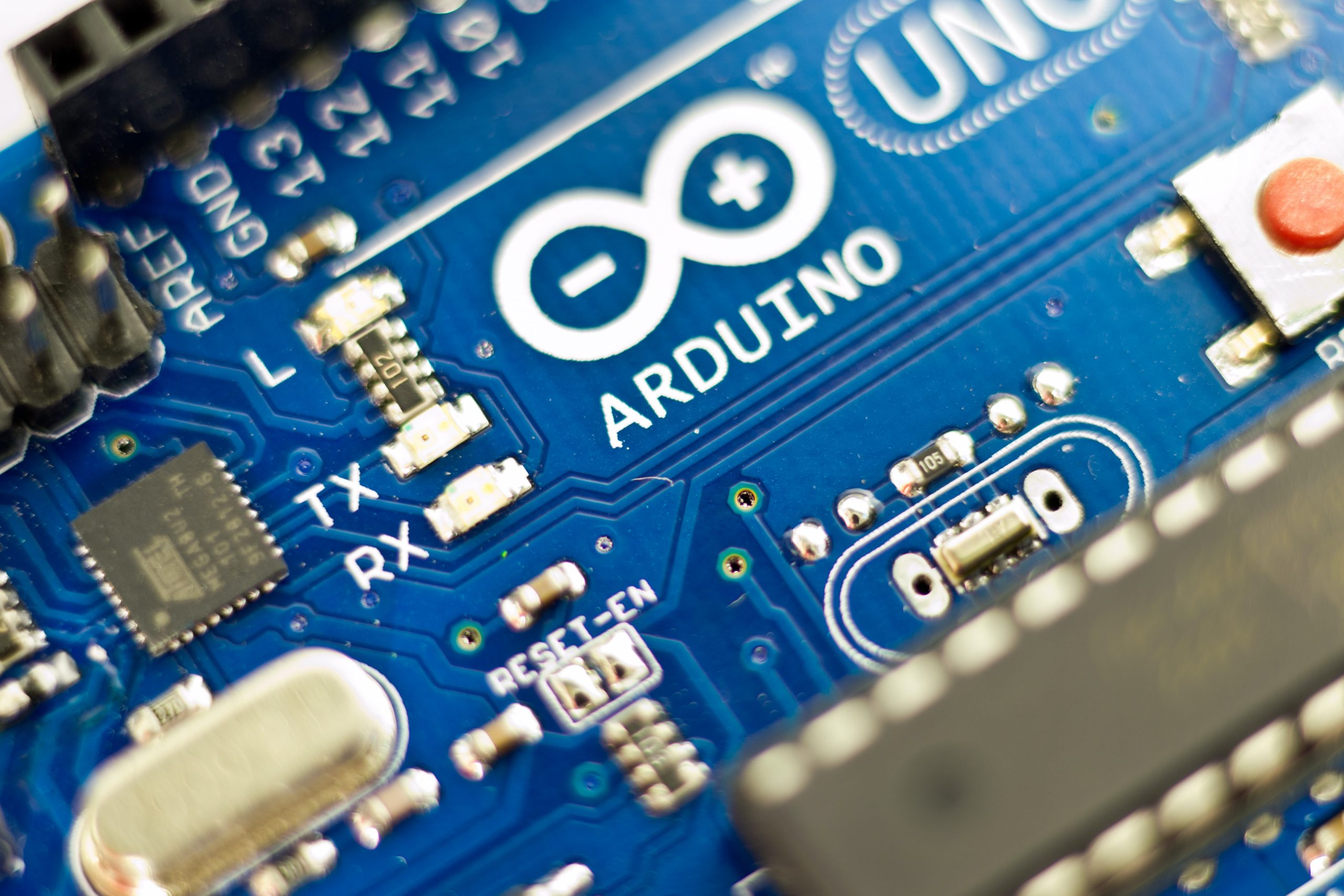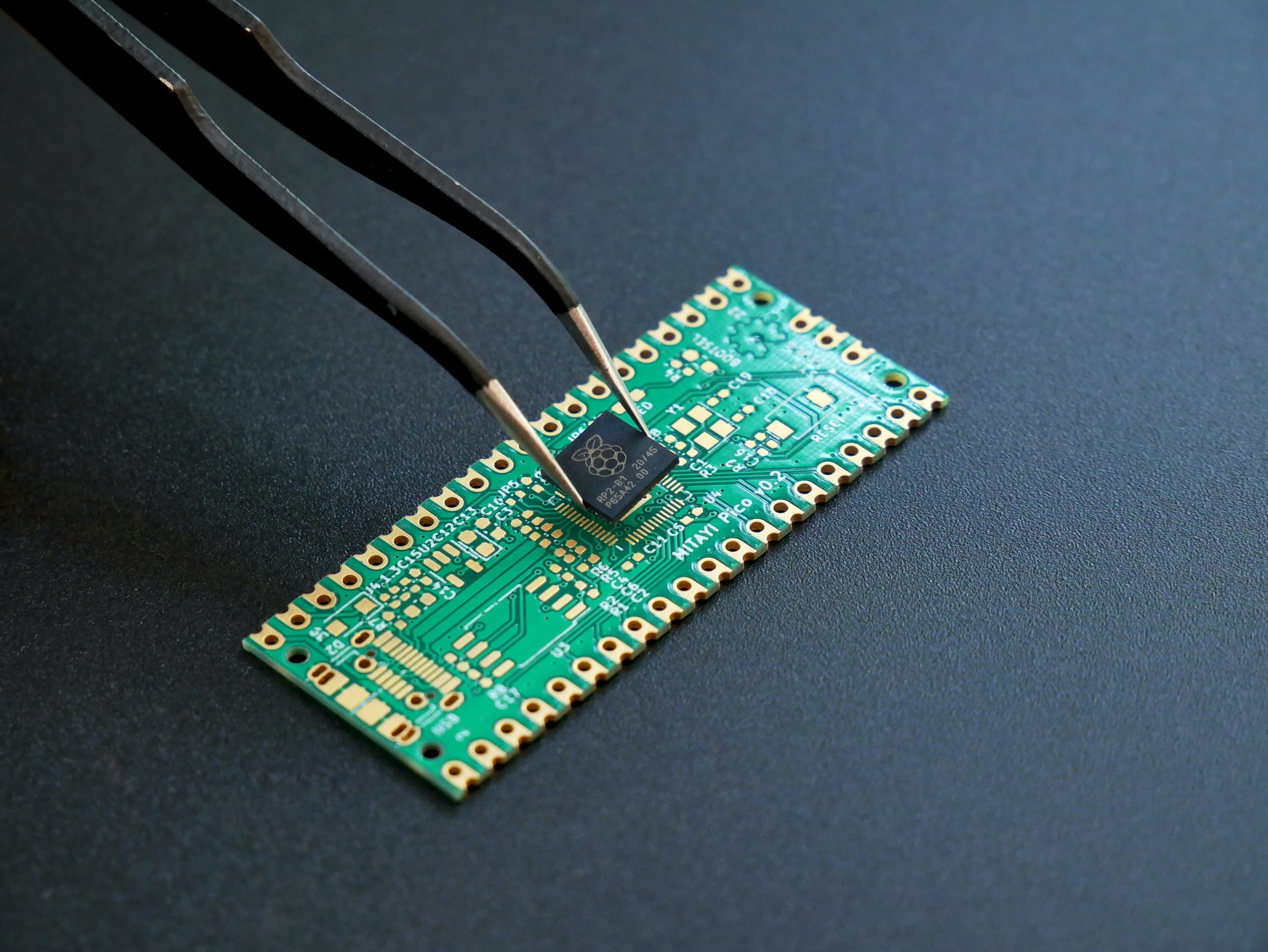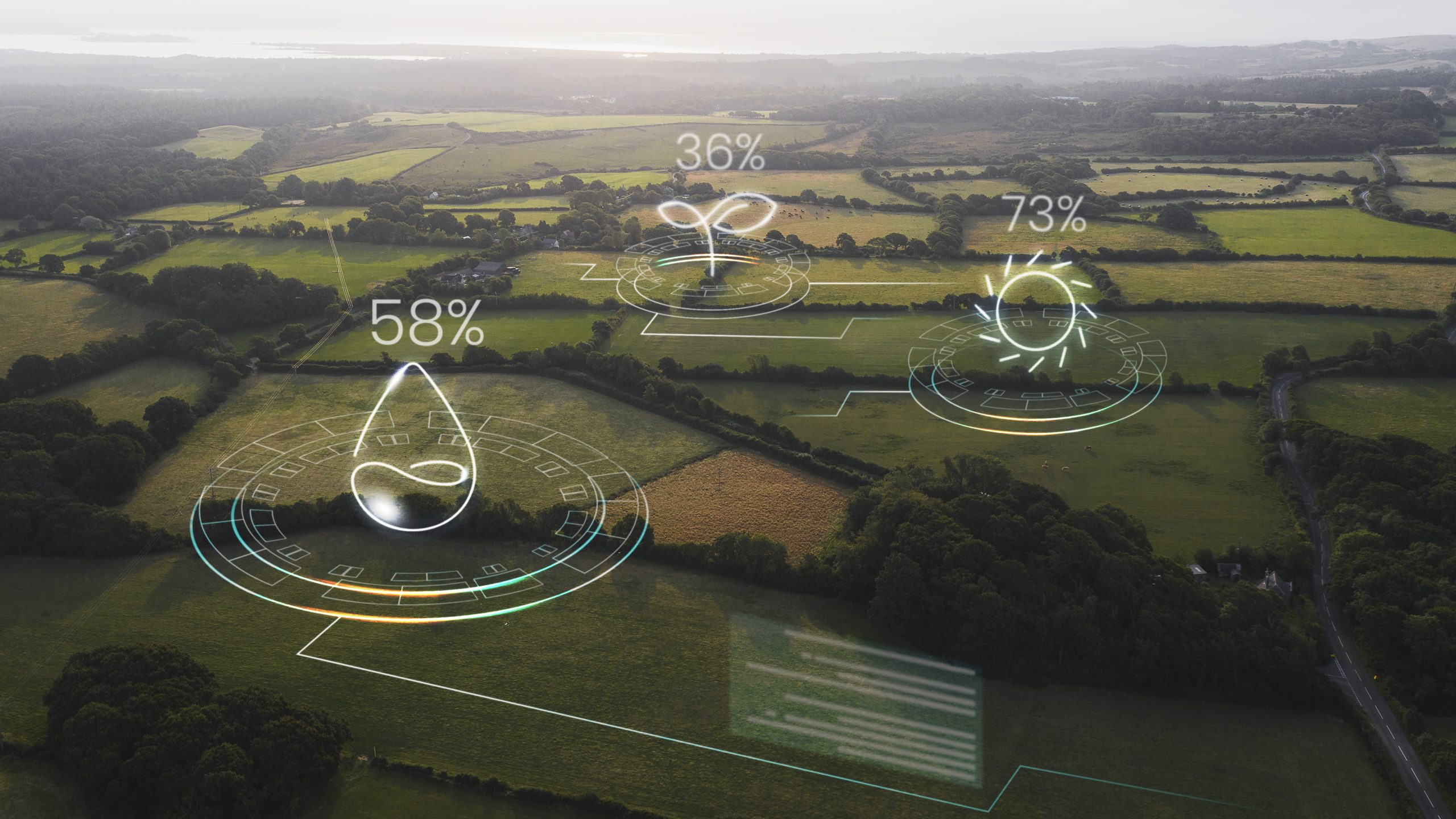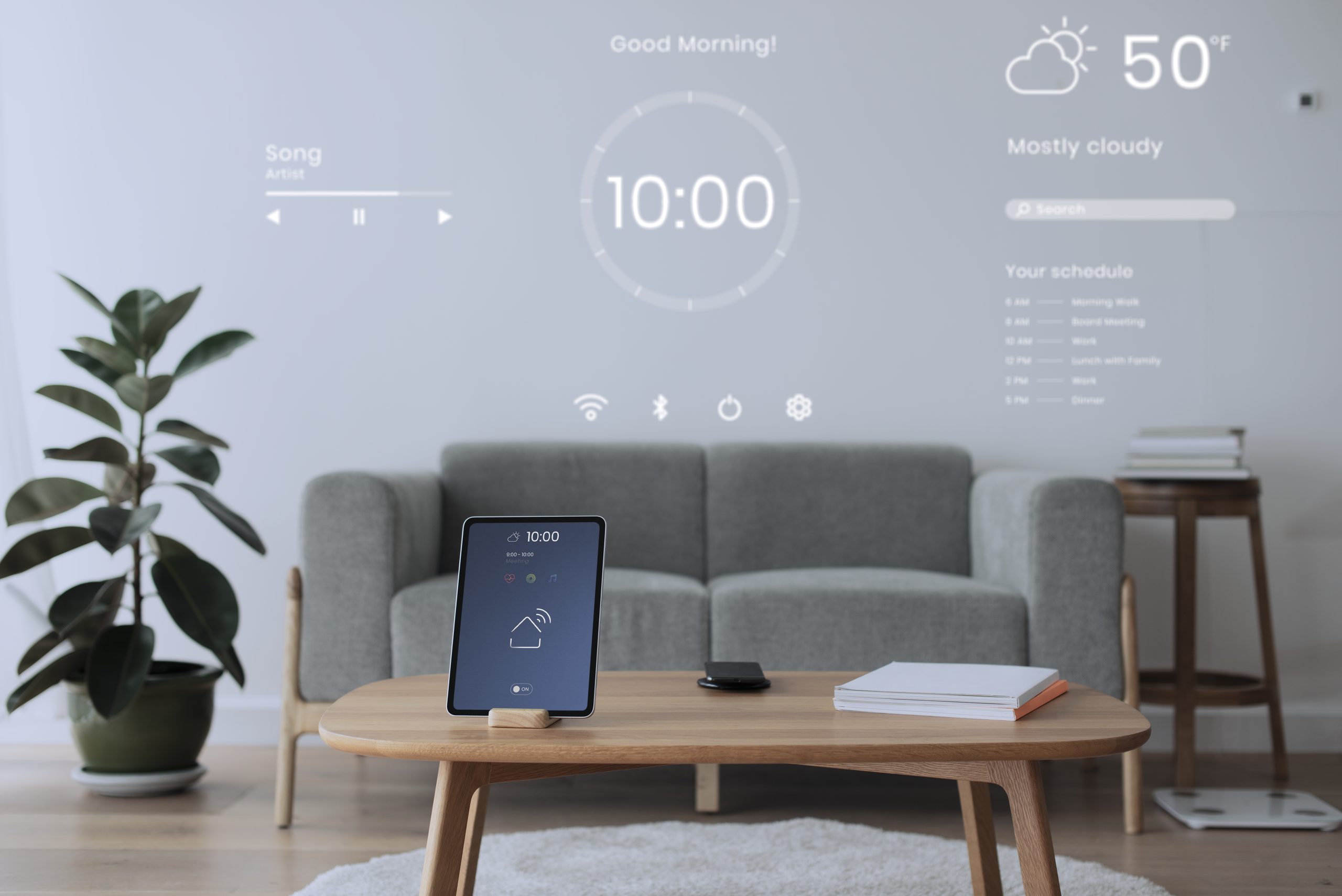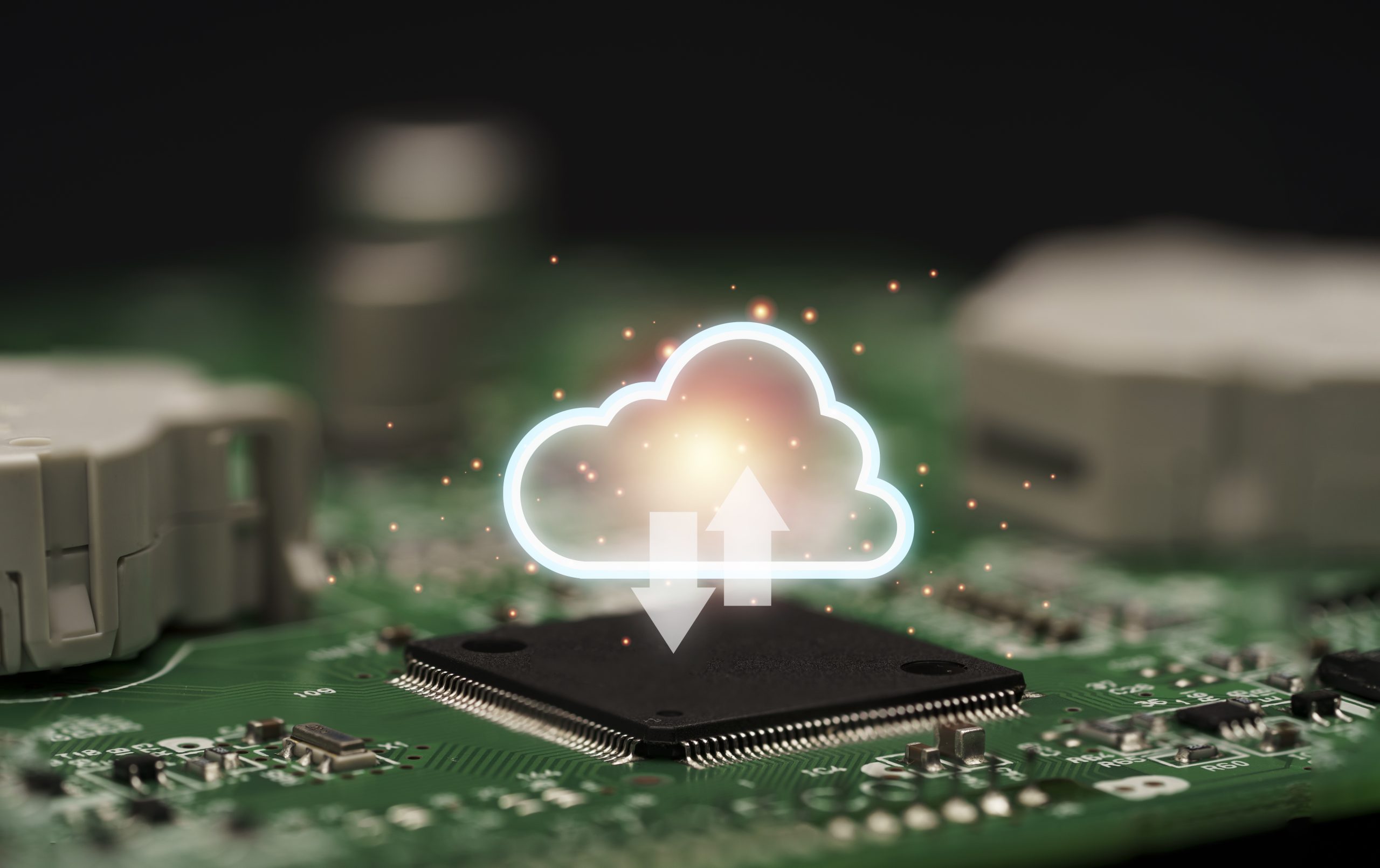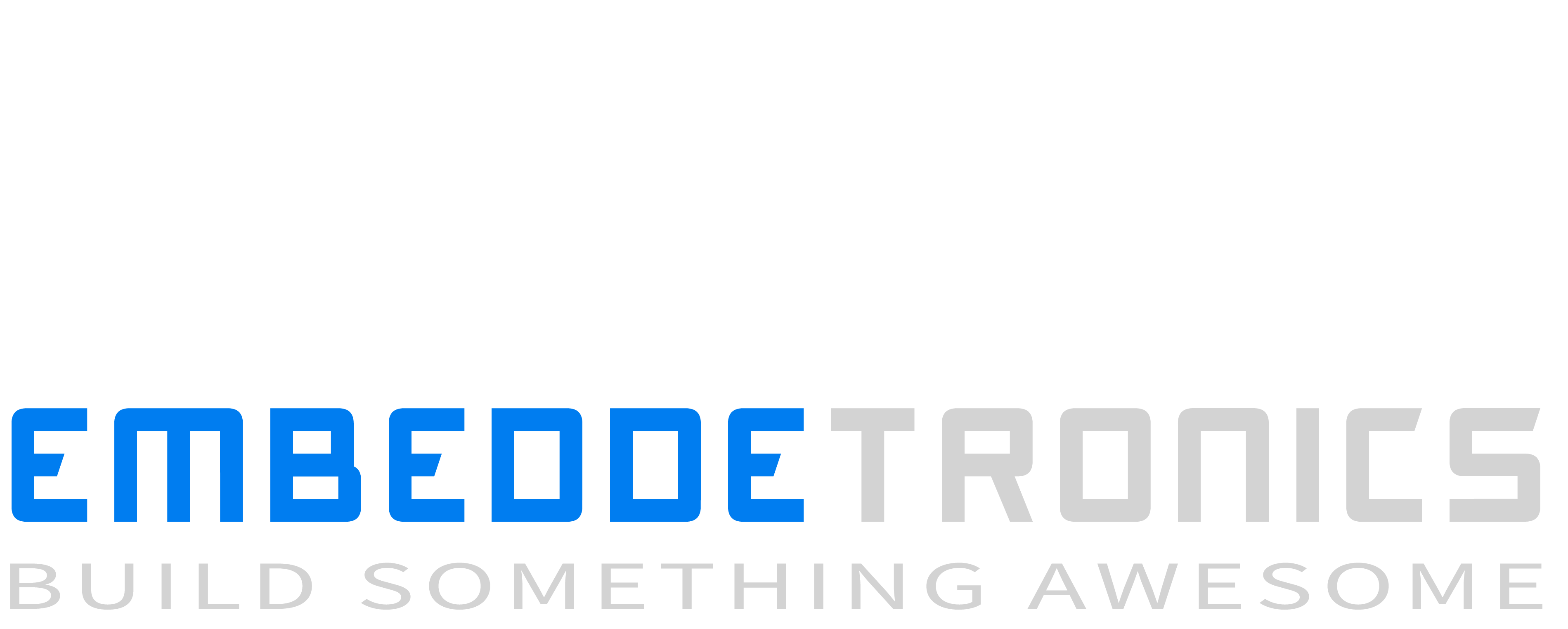Microcontroller is an electronic device that consists of a central processing unit (CPU), memory, and integrated input/output (I/O) interfaces all on a single chip. Microcontrollers are typically used to control or regulate a system or electronic device.
Various types of microcontrollers are available in the market with different word lengths such as 4-bit, 8-bit, and 16-bit microcontrollers for simple applications, while 32-bit, 64-bit, and 128-bit microcontrollers are considered to be complex in size.
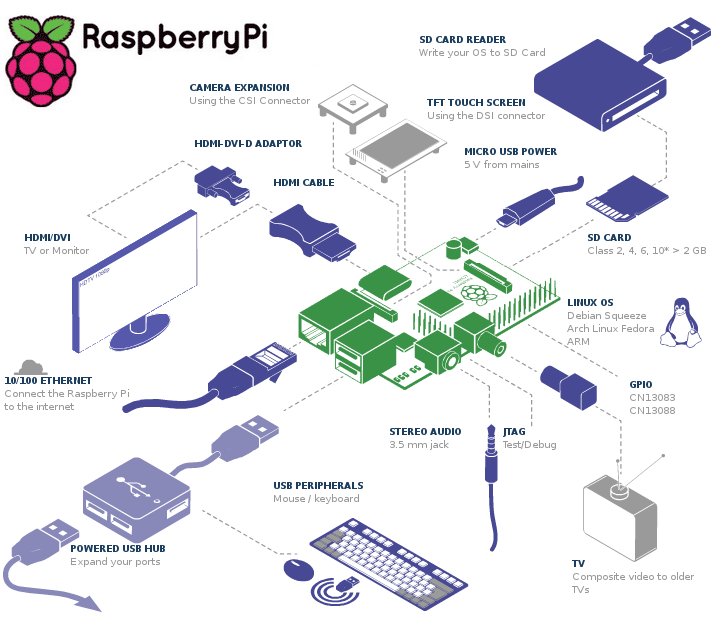
Every electronic device that stores data, measures, displays information, or performs calculations usually uses a microcontroller chip inside it. The basic structure of a microcontroller consists of:
- CPU
The brain of the microcontroller is called the CPU. The CPU is used to fetch data, decode it, and ultimately complete the task assigned. With the help of the CPU, all the components of the microcontroller are connected into one system.
- MEMORY
In a microcontroller, memory stores all programs and data. Microcontrollers are built with a number of memories such as RAM and ROM or as flash memory for program code storage, and for some microcontrollers there is also EEPROM that can retain data when the microcontroller loses power.
- INPUT/OUTPUT PORTS
I/O ports are used to connect or control various devices such as sensors, buttons, LCD screens, LEDs, and so on.
- SERIAL PORT
Port ini memberikan antarmuka serial antara mikrokontroler dan berbagai perangkat lain seperti port paralel.
- TIMER
A microcontroller can be equipped with one or more timers. The timer or counter controls all counting and timing operations inside the microcontroller. The main operations performed by the timer include pulse/clock generation, frequency measurement, modulation, oscillation generation, and so on.
- ADC (ANALOG TO DIGITAL CONVERTER)
The ADC is used to convert analog signals into digital signals. Digital signals are commonly used for sensor inputs.
- DAC (DIGITAL TO ANALOG CONVERTER)
The DAC function is opposite to the ADC, which is to convert digital input into analog output. This device can be used to control input for DC motors and other functions.
- SPECIAL FUNCTION BLOCKS
Some special microcontrollers are made for special applications such as space systems, robots, and so on. These special blocks have additional ports for performing specific functions.
Types of Microcontroller
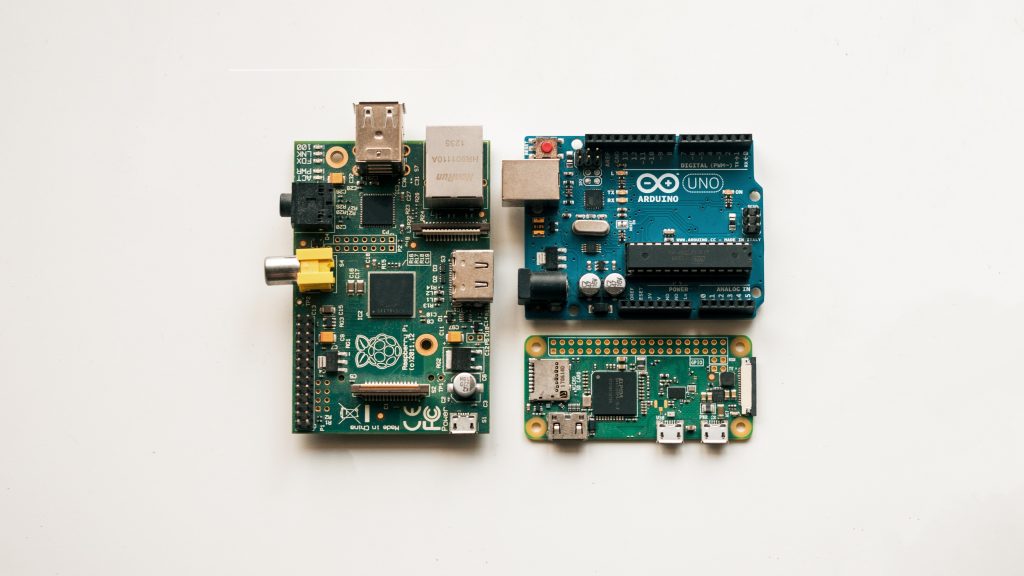
Microcontrollers come in various types, each with its unique features and capabilities. Here are the types of microcontrollers:
- 8-bit Microcontroller
8-bit microcontrollers are the most commonly used type of microcontroller. They have a simple architecture and are relatively easy to program. They usually have limited memory and are used for low-cost and low-power applications. Some popular 8-bit microcontrollers include Atmel AVR, Microchip PIC, and Freescale 68HC08.
- 16-bit Microcontroller
16-bit microcontrollers are more powerful than 8-bit microcontrollers and offer higher performance levels. They are used in applications that require higher levels of complexity. They are widely used in applications such as motor control, medical devices, and automotive systems. Some popular 16-bit microcontrollers include Renesas RX, Microchip dsPIC, and Freescale Coldfire.
- 32-bit Microcontroller
32-bit microcontrollers are the most powerful and capable of all microcontrollers. They have much larger memory and offer very fast processing. They are used in applications such as industrial automation, robotics, and high-end medical devices. Some popular 32-bit microcontrollers include ARM Cortex-M, Renesas RX600, and Atmel SAM3X.
- Digital Signal Controller (DSC)
Digital Signal Controllers (DSCs) are a type of microcontroller specialized in processing digital signals. They are used in applications such as motor control, power management, and audio processing. DSCs are optimized for digital signal processing (DSP) and are ideal for applications that require real-time digital signal processing. Some popular DSCs include Microchip dsPIC and Texas Instruments C2000.
- Energy-Optimized Microcontroller
Energy-optimized microcontrollers are microcontrollers specifically designed for applications that require high energy efficiency. They are used in applications such as medical devices, temperature control systems, and security systems. Energy-optimized microcontrollers typically have features such as power-saving modes, power monitoring, and low-voltage detection. Some popular energy-optimized microcontrollers include Texas Instruments MSP430 and Microchip PIC24.
Temukan kombinasi sempurna antara gaya dan perlindungan dengan casing berkualitas tinggi kami untuk iPhone 14 Pro Max. Solusi praktis ini tidak hanya menawarkan tampilan elegan, tetapi juga perlindungan optimal terhadap benturan dan goresan. Berinvestasilah pada produk yang tahan lama dan fungsional “apple iphone 14 pro max case“, yang melengkapi perangkat Anda dengan sempurna dan sekaligus mencerminkan nilai-nilai pribadi Anda.
- Microcontrollers with Security Features
Microcontrollers with security features are microcontrollers optimized for system security. They come with security features such as cryptography, hardware protection, and tamper detection. These microcontrollers are usually used in security systems, payment systems, and applications that require data protection. Some popular microcontrollers with security features include Atmel SAM L11 and NXP LPC5500.
- Internet of Things (IoT) Microcontroller
IoT-enabled microcontrollers are microcontrollers designed to process and transmit data on the IoT network. They come with Wi-Fi, Bluetooth, and other wireless technology modules. These microcontrollers are used in applications such as smart homes, smart cities, and smart grids. Some popular IoT-enabled microcontrollers include STMicroelectronics STM32 and ESP32.
- Special Application Microcontroller
Microcontrollers for special applications are designed to meet the needs of highly specific applications. They can have unique architecture and special features to meet the needs of specific applications. Some examples of special application microcontrollers include sensor microcontrollers used in remote sensing applications and OLED microcontrollers used in display applications.
Microcontroller Applications
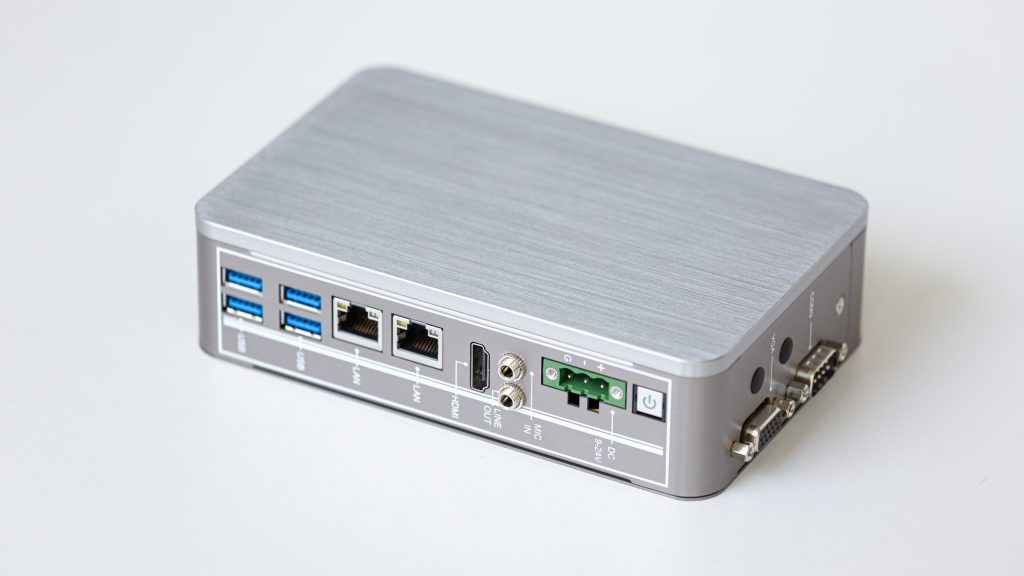
Microcontrollers are intended for embedded devices. Microcontrollers are used in automated devices such as consumer electronics, devices, mobile machine control systems, remote control devices, toys, and many more embedded systems. With microcontrollers, size and cost can be reduced compared to designs that use microprocessors. Microcontrollers generally incorporate the necessary analog components to control electronic structures.
Consumer Electronics
Microcontrollers are used in a variety of consumer electronic devices such as televisions, remote controls, digital cameras, and audio systems. Microcontrollers help in power management, basic function control, and provide the ability to process audio and video signals. Examples of microcontrollers used in these applications are PIC and AVR microcontrollers and others.
Automotive
Microcontrollers are also used in vehicle systems such as fuel injection systems, braking systems, comfort systems, and safety systems. Microcontrollers help optimize vehicle performance and efficiency, reduce emissions, and improve safety. Examples of microcontrollers used in this application are Freescale and Renesas microcontrollers and others.
Industry
Microcontrollers are also used in industries such as control and monitoring systems, robotics, and automatic control systems. Microcontrollers help improve efficiency and productivity in various industrial applications. Examples of microcontrollers used in this application are ARM and 8051 microcontrollers.
Health
Microcontrollers are used in health applications such as medical devices and hearing aids. Microcontrollers assist in measuring and processing signals to produce useful information for diagnosis and treatment. Examples of microcontrollers used in this application are MSP430 and dsPIC microcontrollers.
IoT (Internet of Things)
Microcontrollers are used in IoT applications to control and process data from various wireless devices. These microcontrollers are used in various applications such as smart homes, smart cities, and smart grids. Examples of microcontrollers used in this application are ESP32 and STM32 microcontrollers.
Conclusion, microcontroller systems have become an essential part of various modern technology applications. With their high processing and control capabilities, as well as efficient data transmission and communication capabilities, microcontroller systems allow us to easily and efficiently control and manage a wide range of systems and devices.
